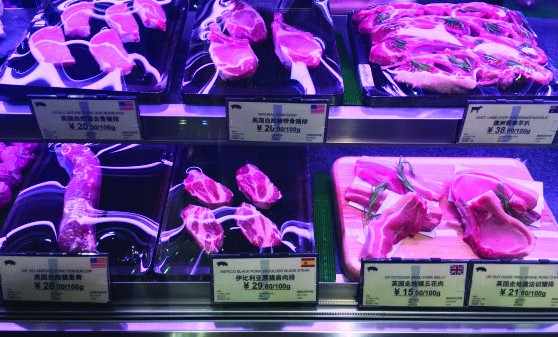Plummeting pork prices are dampening China’s economy and threatening to send it into a deflationary situation.
China’s headline economic performance has been dragged down by a further slump in pork prices, down 30.1% year-on-year in October, compared with 22% in September, amid an oversupply of pigs and weak demand, Reuters reports.
China’s overall consumer prices dropped in October, as key gauges of domestic demand, including for pork, pointed to weakness not seen since the pandemic, while factory-gate deflation deepened, casting doubts over the chances of a broad-based economic recovery, the report said.
The consumer price index (CPI) dropped 0.2% in October from a year earlier and slipped 0.1% from September, data from the National Bureau of Statistics (NBS) showed on Thursday.
Combined with other economic indicators, the data in the fourth-quarter so far suggests a meaningful recovery in the world’s second-largest economy remains elusive.
The Financial Times reported that Live hog futures traded on China’s Dalian Commodity Exchange have dropped about 15% since the start of October, reflecting a sharp deterioration in expectations for nationwide pork prices, while wholesale pork prices are down more than 40% from a year ago.
“It looks like [consumer inflation] will turn negative again in October, and the main reason for that looks to have been a decline in food inflation caused by the fall in pork prices,” said Julian Evans-Pritchard, senior China economist at Capital Economics, the FT reports.
The price of pork in China, which is the world’s largest producer and consumer, has long followed a boom-and-bust cycle as smaller farmers response to rising demand, resulting oversupply and triggering sharp price falls, forcing the same farmers to get back out of pork production.
Beijing has sought to exert greater control over this cycle by concentrating more production in a handful of large-scale farming outfits, but the FT reports that those producers have now ‘exacerbated price falls’.
Pork prices began to rebound in July — partly in response to government-led buying — only to fall back again as large listed producers, including Muyuan and New Hope, opted not to cut capacity despite broader weakness in demand.
Chinese piglet prices are down just 10 per cent from a year ago, suggesting demand for young pigs remains relatively strong despite pork prices dropping by far more. But Darin Friedrichs, director of market research at Sitonia Consulting in Shanghai, said there were no signs of an imminent fourth-quarter rebound in demand, unlike last year when the same strategy benefited from the relaxing of national Covid restrictions.
.“It looks like they’re trying to just stick it out again,” Friedrichs said. “But some [pork producers] are selling subsidiaries or making executives buy back stock. That indicates there’s more financial pressure on them.”
Muyuan, the world’s largest hog farmer, is down more than 20 per cent this year, even after executives announced a share buyback worth about Rmb1bn ($137mn) last month, the FT reported.




